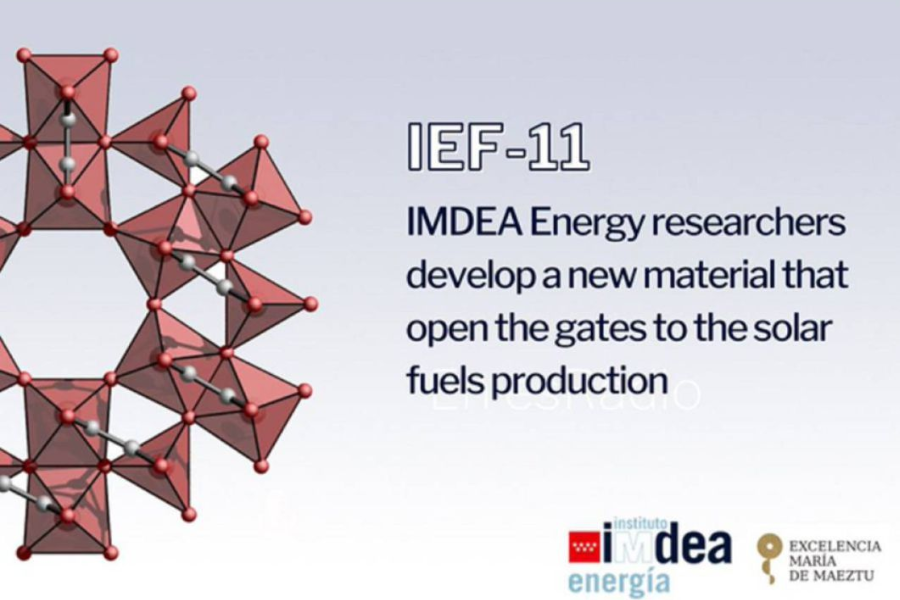IMDEA Energy researchers develop a new material that open the gates to the solar fuels production
The generation of green fuels such as hydrogen is nowadays a fundamental research topic associated with the growing energy demand. Photocatalysis, a photochemical reaction that converts solar energy into chemical energy on the surface of a catalyst, appears as a challenging way to produce H2 from water alone.
In this context, IMDEA Energy Institute has successfully synthesized and characterized a new photocatalyst material capable of producing record amounts of hydrogen for the generation of solar fuels.
This new materials is aporous metal-organic framework (MOF) based on the titanium(IV), called IEF-11 (IEF stands for IMDEA Energy Framework). This material achieves the best overall water splitting performances reported so far for MOFs in absence of any sacrificial agent or co-catalysts, and is able to maintain its activity after more than ten cycles.
The material was prepared by heating a mixture of dispersed precursors in a solvent in a closed reactor using a high-throughput method. Due to its nanometric nature, its structure has been unveiled by combining unconventional techniques; specifically, the determination of the crystal structure has been possible using the three dimensional electron diffraction (3DED) technique and the synchrotron X ray diffraction (PDRX). Furthermore, its extraordinary structural and chemical stability under a wide variety of aggressive conditions (pH, organic solvents and irradiation) has been demonstrated.
Considering the versatility of the IEF-11 design, it could serve as a leading structure for the development of a series of Ti-MOFs and for obtaining a new generation of efficient solar photocatalysts.



